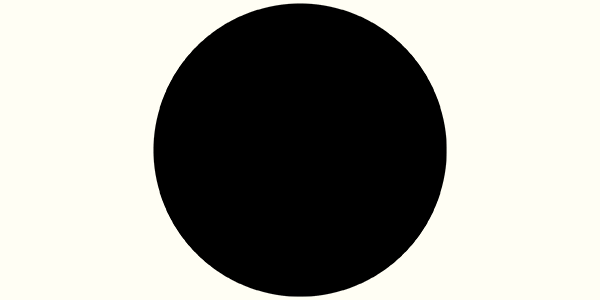August 4 -14 at De Appel: Day for Night is honored to present the artwork Liberashon (Liberation) by Glenda Martinus within a viewing apparatus devised by Quinsy Gario. The work invokes Trinta di Mei, the popular uprising on Curaçao in 1969 and the hope of liberation from the Dutch colonial system on this and neighbouring islands.
For this, the fourth presentation in the framework of Day for Night, Bianca Stigter, author of 'Atlas van een Bezette Stad: Amsterdam 1940-1945' (just presented and which remains in our archive and bookstore) recommended Quinsy Gario with the following note:
“Of course I have been thinking as well about the artist to come after me, and the person who came to mind first is Quinsy Gario. The abolishment of Black Pete in the Netherlands had a very important starting point in his art project ‘Zwarte Piet is racism’. If ever there was an artwork with a huge direct impact on society in the Netherlands it is this. I know Gario has moved on from this project. I am very curious what he would show in this context of Day and Night at de Appel. Maybe he will anchor some much needed West Indian history to Amsterdam — which is just as important to the city and its inhabitants as what happened here.”
Accepting the invitation, Gario decided to involve his mother Glenda Martinus in Day for Night. Making art with family members and downplaying the individual in the creation process is a common thread for Gario. Liberashon has previously been presented as part of a performance by mother and son that tells of the events and consequences of Trinta di Mei, called Whiskey In A Crate.
Trinta di Mei is Papiamentu for May 30 and refers to the strike of underpaid, black workers at the Shell refinery on May 30, 1969, which turned into a fully fledged popular uprising of black residents on Curaçao. The conflict between Shell and its employees escalated when Shell started firing black workers only to get them hired again by a third party, the subcontractor Wescar, for much lower wages. On May 30, 1969, 5000 people lay down their work tools and make a march from the Shell refinery to the center of Willemstad. Then things go wrong. The emotions about injustice cannot be swallowed any longer. The march gets out of hand, the police fire shots, two people are dead, a union leader is hospitalized with a serious gunshot wound and the city center of Willemstad is on fire. The Netherlands sends 300 Marines to "create order," which the UN sees as an undesirable colonial display during a justified rebellion against social and political inequality on the island.
Gario decided to involve his mother Glenda Martinus fully in the project when he realized that he retold her story about May 30; after all he was not yet born, unlike Martinus. Her father, his grandfather, worked as a carpenter at Shell's recreation room during the rebellion. She still remembers exactly how that day unfolded, when she had to find a way home from a burning city center on her own. For Liberashon, Martinus used, among other materials Albert Heijn soy, rice and almond milk cartons, invoking another controversial corporate presence on the island. In transforming these containers into important landmarks such as the Martinus family house, the elite supermarket Henderson, the Shell refinery and the school and church in the center of Willemstad, she shows the depth of Dutch involvement on the island today and counters wasteful economic policy.
May 30, 1969 is often forgotten in official accounts of Dutch history, yet the rebellion against racism, inequality and skewed socio-economic relations between white and black inhabitants of the island, proved an important turning point. The government resigned, the collective labor agreement was resolved, and the rubble was cleaned up. But is equality now a matter of course, 51 years after the popular uprising?
More questions arise: is history repeating itself again, now that a large part of the population of Curaçao lives in poverty and has recently rebelled against their situation? Geopolitical strife in the region and global economic inequalities aggravated by COVID-19 have only increased pressure on the boiler. A lot has changed after Trinta di Mei, but has enough changed?
You can listen to a conversation between Quinsy Gario, Glenda Martinus and Bianca Stigter below, in which they discuss the project as well as Gario's Zwarte Piet is racisme.
On view August 4 – August 14, 2020 (Tues–Fri)
Daytime Gallery Visits (12am–6pm CET) buy tickets
Night Time Livestream (6pm–6am CET)
What does it mean to perceive an artwork – and the artist who made it – in different light?
As de Appel reopens amidst profound social and environmental change, we rethink our future program and use the present to connect to makers of art and history – themselves connected to Amsterdam.
Introducing one artist, one work at a time, this series of focused presentations unfolds throughout Summer 2020. Each is accessible by appointment in the daytime and via livestream outside gallery hours. In this way we restart the simple ritual of welcoming the public to de Appel at our home address of Schipluidenlaan 12. And we also try to understand the altogether different spacetime that connects what we do to anyone around the world with access to www.deappel.nl while we redevelop our website.
Our night may be your day, and vice versa. It’s that simple but also not simply opposed. The situation allows for close encounters with works and their makers during the slow fade from day to dusk to night to dawn and again towards daylight.

